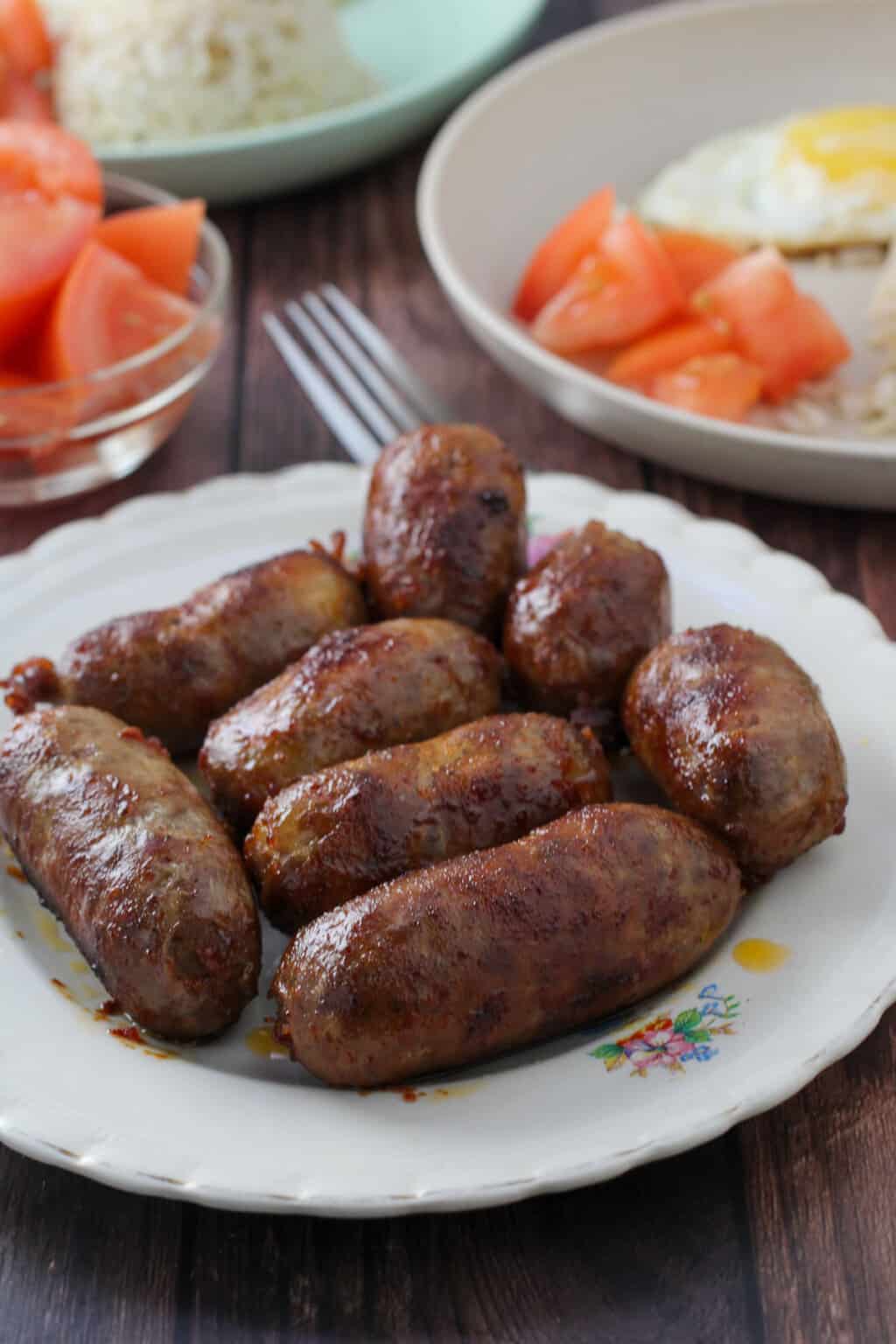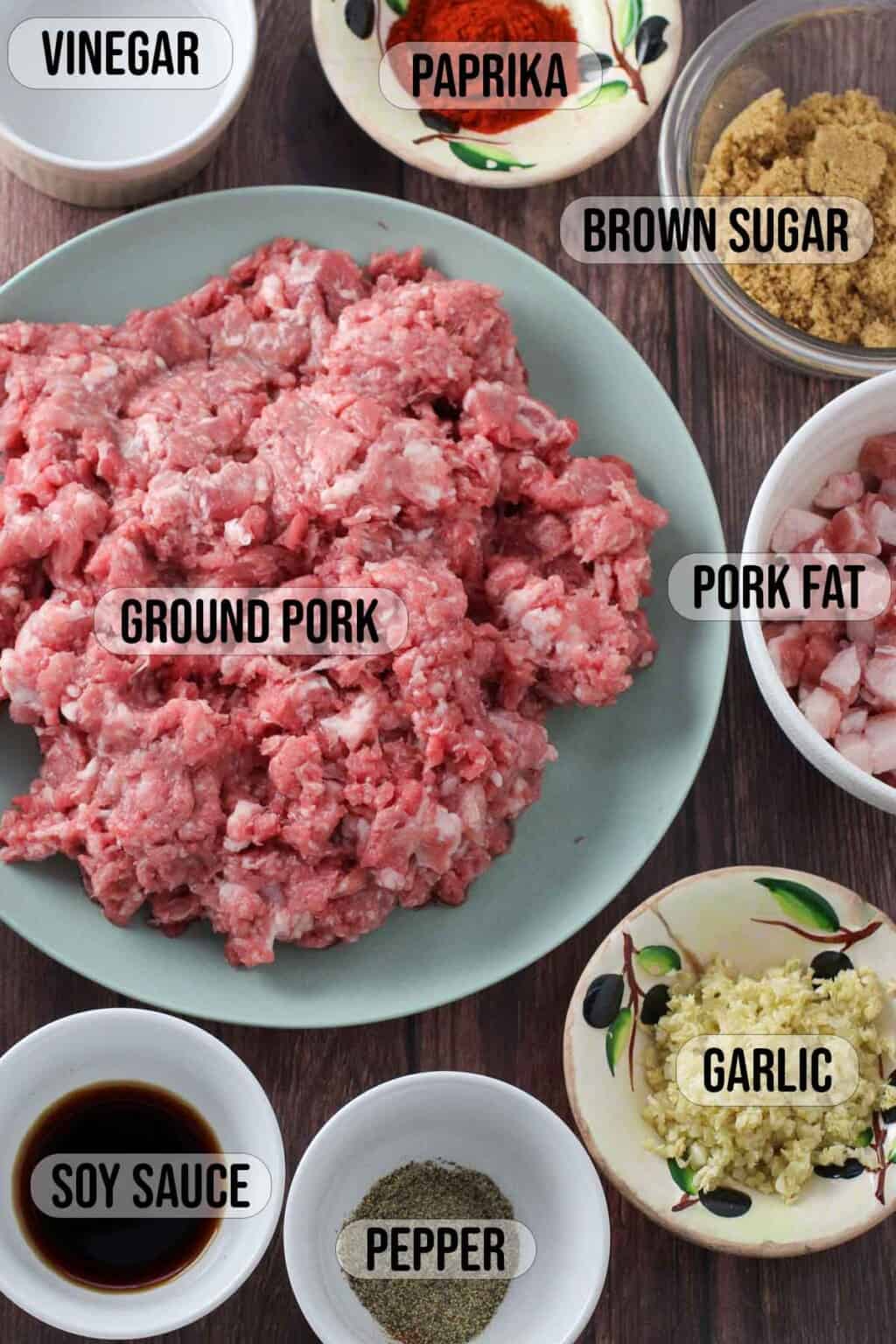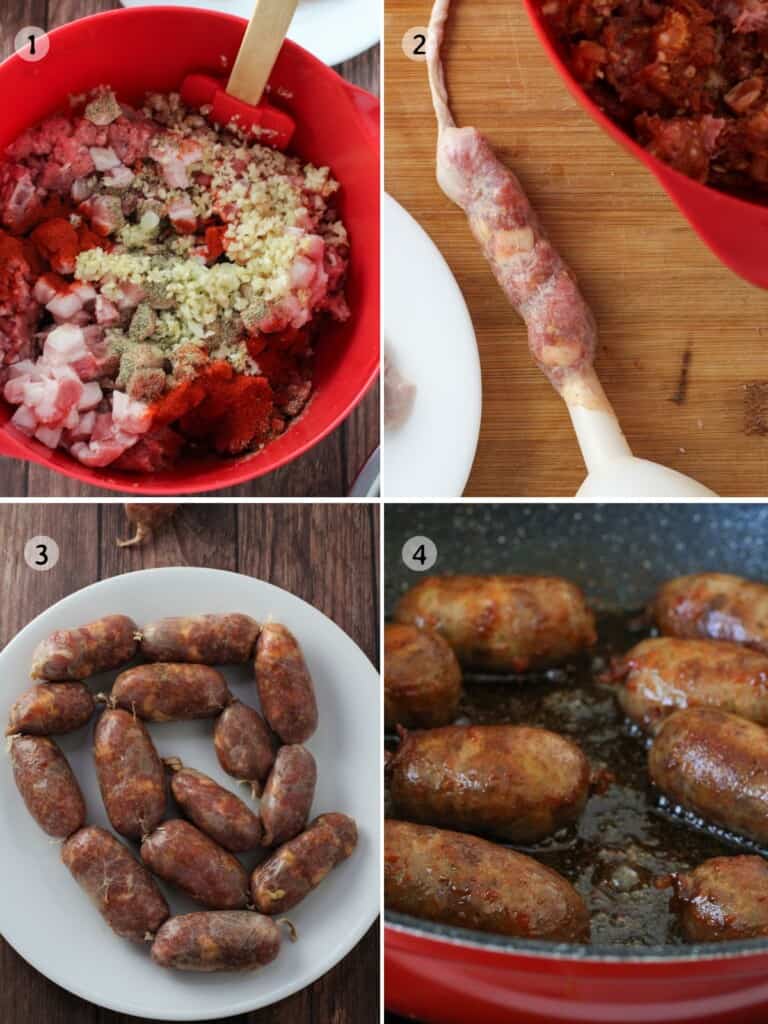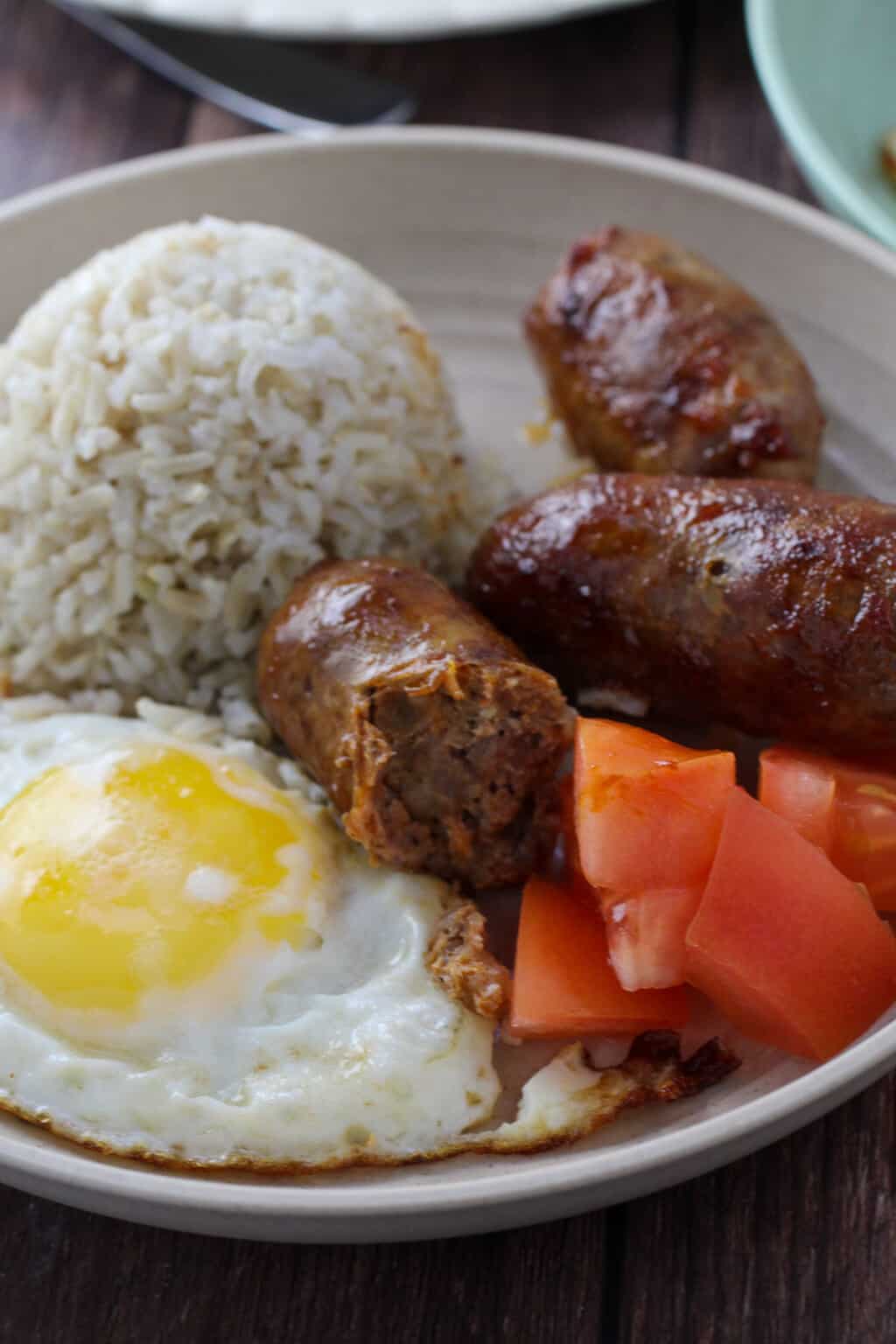Longganisa is a staple Filipino breakfast often served as part of the “Long-si-log” trio, with fried rice (sinangag) and fried egg (itlog). This savory-sweet sausage is made by stuffing hog-casing with ground pork, deliciously flavored with spices and seasonings.

I was bent on work this past week and was able to check off a few things from my long to-do list today. I scheduled content on my Facebook page, updated some posts on the blog, tested a couple of recipes, and answered emails. Hooray for diligence!
The accomplishment I’m most excited about, however, was making my very own homemade Filipino-style sausage. Not skinless longganisa, but the REAL DEAL. Complete with casing, ya ‘all. Woot hoot!
Longganisa hamonado has been on my bucket list for so long that when I saw hog casings in a Mexican supermarket, I wasted no time gathering the rest of the ingredients needed. After one afternoon of mixing, stuffing, and knotting, I now have a good supply for many longsilog breakfasts. Yay!
Ingredients notes

- Lean ground pork– usually from pork shoulder. Choose an 80/20 fat ratio for the best results.
- Ground pork back fat– adds juiciness and flavor.
- Seasonings and spices– paprika, salt, pepper, soy sauce, vinegar, and fresh garlic enhance flavor.
- Sugar– adds the characteristic sweetness of the hamonado-style sausage.
- Anisado wine – a cooking wine made from anise herb and distilled sugar cane wine used in various processed meat products.
- Hog casings- from cleaned intestinal membranes of hogs. Available dry or fresh. It’s used to enclose the sausage ingredients.
- Water and oil– for cooking the sausage

Equipment needed
- Funnel- makes stuffing the casings easier
- Kitchen twine- to secure individual sausages
Longganisa process

- Prepare meat filling– Combine ground pork, minced pork fat, soy sauce, vinegar, anisado wine, sugar, salt, pepper, paprika, and garlic in a bowl. Refrigerate for about 2 hours to allow flavors to meld and the meat mixture to firm up.
- Stuff casings– soak hog casings in warm water for 30 minutes and drain well. In the sink, run warm water through the casings. Check for spots with leaks and cut out these sections. Insert the nozzle of a funnel on one of the casing. Scoop pork mixture into funnel and gently pack into casings, leaving about 5 inches on both ends. Tie off one end into a double knot or tie it with fine kitchen twine.
- Separate into individual links– pinch sausage at intervals of about 4 inches and gently twist the sausage link at this “pinched” point in one complete rotation. Repeat this process down the coil but alternating the direction of twisting (towards you and away from you) from one link to the next. Tie off the other end into a double knot or with kitchen twine. Place in a ziplock bag and refrigerate overnight.
- Pan-fry longganisa– When ready to cook, cut the sausage into individual links and prick each sausage once or twice with the tip of a knife. Place in a wide pan with water and bring to a boil. Lower heat, cover, and simmer until meat is fully cooked and liquid is almost absorbed. Add oil and continue to cook, stirring regularly, until sausages are caramelized. Remove from the pan and serve hot.
Cook’s Tips
- If you don’t want to use or can’t find pork fat, use 75% lean/25% fat ground pork ratio.
- Do not overstuff casings to keep from bursting during cooking.

How to serve and store
- Longganisa is often enjoyed for breakfast or any time of the day meal as part of the “Long-si-log” trio, with garlic fried rice (sinangag) and fried egg (itlog).
- Place uncooked longganisa links in resealable bags or airtight containers and freeze for up to 6 months.
- Leftover cooked longganisa can be stored in the refrigerator for up to 3 days or in the freezer for up to 2 months. Reheat in the microwave or re-fry before serving.
- Use leftover filling for longganisa wontons!